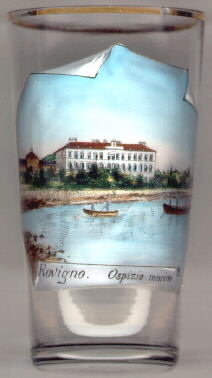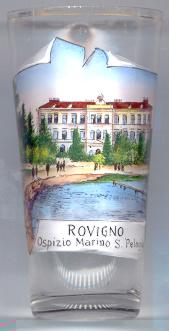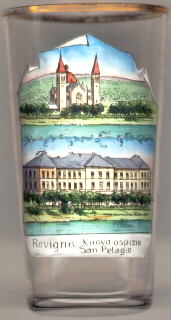

|
| HRVATSKA | CROATIA |
| županija: Istarska |
Rovinj is one of the most popular tourist places on the coast of the Istrian peninsula. Traces of human inhabitation goe back for abuot 3,000 years. The town seems to have originated some time between the 3rd and 5th century, and was first mentioned in a document from the 7th century as castrum Rubini. The Romans were followed by Byzantine rulers, the Langobards, and Franconians. Around the 10th/11th century, central Istria came under the rule of German feudal families, such as the counts of Andechs who ruled the area as dukes of Meranien since 1180. In 1283 Rovinj came under Venetian rule. When central Istria, which then had been ruled by the counts of Görz (Gorizia) became part of the Austrian countries in 1374, Rovinj's importance as a Venetian port increased further. During the 16th century the town was fortified to defend itself against the Turks. When the influence of the Ottoman empire had declined, the town grew further. The small natural channel between Rovinj and the main land was filled in 1763, the island now became a peninsula. During the 17th and 18th centuries Rovinj was the strongest shipbuilding, fishing and maritime centre of Istria. Its importance, however, declined when Austria declared Fiume (Rijeka) and Trieste free ports. The Venetian rule ended in 1797 and for a few years Rovinj enjoyed self-government until it came under Austrian rule in 1805. Between 1809 and 1813 Rovinj belonged to France as part of the Illyrian Provinces. When Rovinj became Austrian again in 1813 it began to grow again as an important industrial, cultural and marine centre in Istria. After World War I Rovinj (Rovigno) belonged to Italy. During World War II Rovinj was occupied by Germany in 1943. After the Treaty of Paris in 1947 Rovinj became part of Yugoslavia (Republic of Croatia).
Jule Verne, the father of science fiction, chose Rovinj as setting for some of the chapters of his book "Mathias Sandorf" (1885).


The former  maritime sanatorium [left, no. 376, and right, no. 581]
was established in 1888. Originally it was named for Archduchess Maria Theresa, Princess of Bragança, the third wife of
Archduke Karl Ludwig of Austria who was the second brother of Emperor Franz Joseph I. Later it's name was Ospizio San Pelagio.
The sanatorium belonged to the city of Vienna until 1918. When the original building, shown on the
two glasses no. 376 [left] and no. 581 [right] became too small, it was extended in 1906–1908.
The picture on glass no. 196 [below: bottom picture] shows the appearance of the building after that modification.
After World War I the sanatorium gradually was transformed into an orthopaedic clinic, the first one in Croatia.
It is now named for Dr. Martin Horvat.
maritime sanatorium [left, no. 376, and right, no. 581]
was established in 1888. Originally it was named for Archduchess Maria Theresa, Princess of Bragança, the third wife of
Archduke Karl Ludwig of Austria who was the second brother of Emperor Franz Joseph I. Later it's name was Ospizio San Pelagio.
The sanatorium belonged to the city of Vienna until 1918. When the original building, shown on the
two glasses no. 376 [left] and no. 581 [right] became too small, it was extended in 1906–1908.
The picture on glass no. 196 [below: bottom picture] shows the appearance of the building after that modification.
After World War I the sanatorium gradually was transformed into an orthopaedic clinic, the first one in Croatia.
It is now named for Dr. Martin Horvat.

The  church of St. Pelagio (sv. Pelag) [near left, no. 196: top picture]
goes back to the 15th century. The church was rebuilt for the first time in 1589, and was remodelled for the last time in 1842.
After World War II the church was exsecrated and at first was used as a waiting room for the nearby hospital.
After that, the building was neglected and fell into dereliction. Finally, in 1980, the roof collapsed. A new, much smaller church
had been constructed in the vicinity of the hospital already in 1908.
church of St. Pelagio (sv. Pelag) [near left, no. 196: top picture]
goes back to the 15th century. The church was rebuilt for the first time in 1589, and was remodelled for the last time in 1842.
After World War II the church was exsecrated and at first was used as a waiting room for the nearby hospital.
After that, the building was neglected and fell into dereliction. Finally, in 1980, the roof collapsed. A new, much smaller church
had been constructed in the vicinity of the hospital already in 1908.
![[scale]](lineal.jpg)